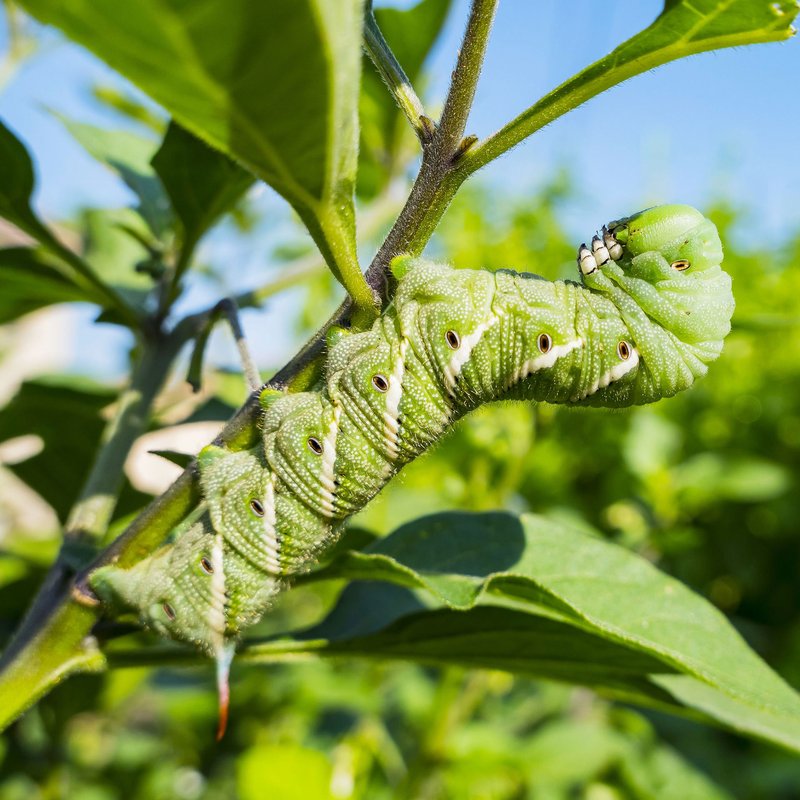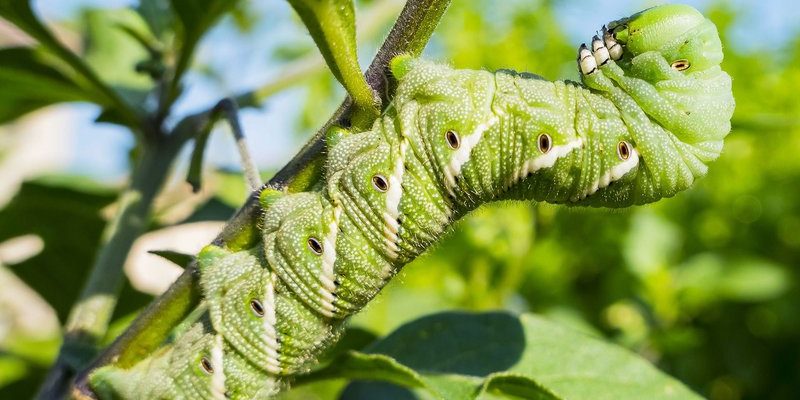
Here’s the thing: preparing for hornworm season isn’t just about having a plan in place when they show up. It means understanding what hornworms are, when they usually appear, and how to identify them before they make a meal of your beautiful plants. Plus, knowing what to do if you find them can save your garden from serious damage. So, grab a cup of coffee or tea, and let’s chat about how to keep your garden thriving during hornworm season.
What Are Hornworms and Why Should You Care?
Hornworms are the larval stage of the hawk moth, also known as the tomato hornworm. These caterpillars can grow up to 4 inches long and are most commonly found on tomato plants, but they also love to munch on peppers, eggplants, and even potatoes. Here’s the kicker: they’re masters of camouflage. Their green color helps them blend in with the leaves, making them difficult to spot. You might be wondering why they matter. Simply put, they can devour entire leaves and even the fruit of your plants in just a few days.
Not only can these pests ruin your crop, but they can also introduce diseases into your garden, which makes them a real threat. Losing a few plants to hornworms can feel like a punch to the gut, especially after all the care you put into your garden. But, don’t worry! Preparing for these pests can set you up for success.
When Does Hornworm Season Start?
The timing of hornworm season can vary depending on where you live. In warmer areas, you might see them as early as late spring, while in cooler regions, they may not appear until summer is in full swing. Typically, hornworms become active when nighttime temperatures stay above 55°F. Want to know if they’re coming? Pay attention to your local weather patterns and plant growth stages.
Additionally, hornworms are often attracted to healthy, thriving plants. So, when your garden is flourishing, that may signal their arrival. Keeping an eye on the temperature and your plants’ health can help you prepare for when these critters decide to crash your gardening party.
How to Identify Hornworms in Your Garden
Identifying hornworms can feel like a game of hide and seek. As I mentioned, they blend in with the leaves well, but there are clues you can look for. First, check for **eaten leaves**; hornworms can devour a leaf in no time. If you notice significant leaf loss, it’s time to investigate further.
Look for the hornworms themselves, which are bright green with a characteristic horn on their rear end. You might also notice **black droppings** on the ground or on the leaves—yep, that’s a dead giveaway! If you see these signs, get your gloves on; it’s time to take action.
Preventive Measures for Hornworms
Prevention is always better than cure, right? There are several ways to keep hornworms at bay before they become a problem:
- Plant Monitoring: Regularly check your plants for signs of hornworms or other pests. Early detection can save your crops.
- Companion Planting: Some plants can deter hornworms. Consider planting marigolds or basil among your vegetable crops.
- Healthy Soil: Keep your soil rich and healthy. Strong plants are more resistant to pests.
- Crop Rotation: Change where you plant your tomatoes and peppers each year to confuse the pests.
By taking these preventive steps, you can create an environment that’s not as inviting to hornworms and other garden pests.
Natural Control Methods for Hornworms
If you spot hornworms in your garden, don’t panic! There are natural ways to control their populations. One effective method is to introduce **beneficial insects** like ladybugs or parasitic wasps, which can help keep hornworm numbers in check.
Another approach is to handpick them off your plants. It sounds tedious, but it can be surprisingly satisfying. Wearing gloves, gently inspect the undersides of leaves and remove any visible hornworms.
You might also consider using *organic insecticides* like neem oil. This natural spray disrupts the life cycle of hornworms and other pests and is safe for most plants. Just make sure to apply it in the early morning or late evening to avoid harming beneficial insects.
When to Call in the Professionals
Sometimes, despite your best efforts, hornworms can take over. If you find yourself facing an infestation, it might be time to call for help. Professional pest control services can offer targeted treatments that are both effective and safe for your garden.
Before you go this route, consider the severity of the problem and your comfort level with DIY pest control. If it feels overwhelming, don’t hesitate to reach out to experts who can help restore balance to your garden.
The Importance of Staying Informed
Knowledge is power when it comes to gardening and pest control. Stay updated on local gardening forums, community groups, or agricultural extensions in your area. They often share tips on hornworm season timing, identification, and management strategies tailored to your region.
Consider subscribing to gardening blogs or channels that focus on organic and sustainable practices. The more you learn about hornworms and other pests, the better equipped you’ll be to deal with them effectively.
In conclusion, preparing for hornworm season can feel like a daunting task, but with the right knowledge and tools, you can protect your garden. Remember to monitor your plants, identify any potential invaders early on, and employ preventive measures. Whether you’re handpicking hornworms or enlisting the help of beneficial insects, a little preparation goes a long way. So, roll up your sleeves and get ready to enjoy a thriving, pest-free garden!

